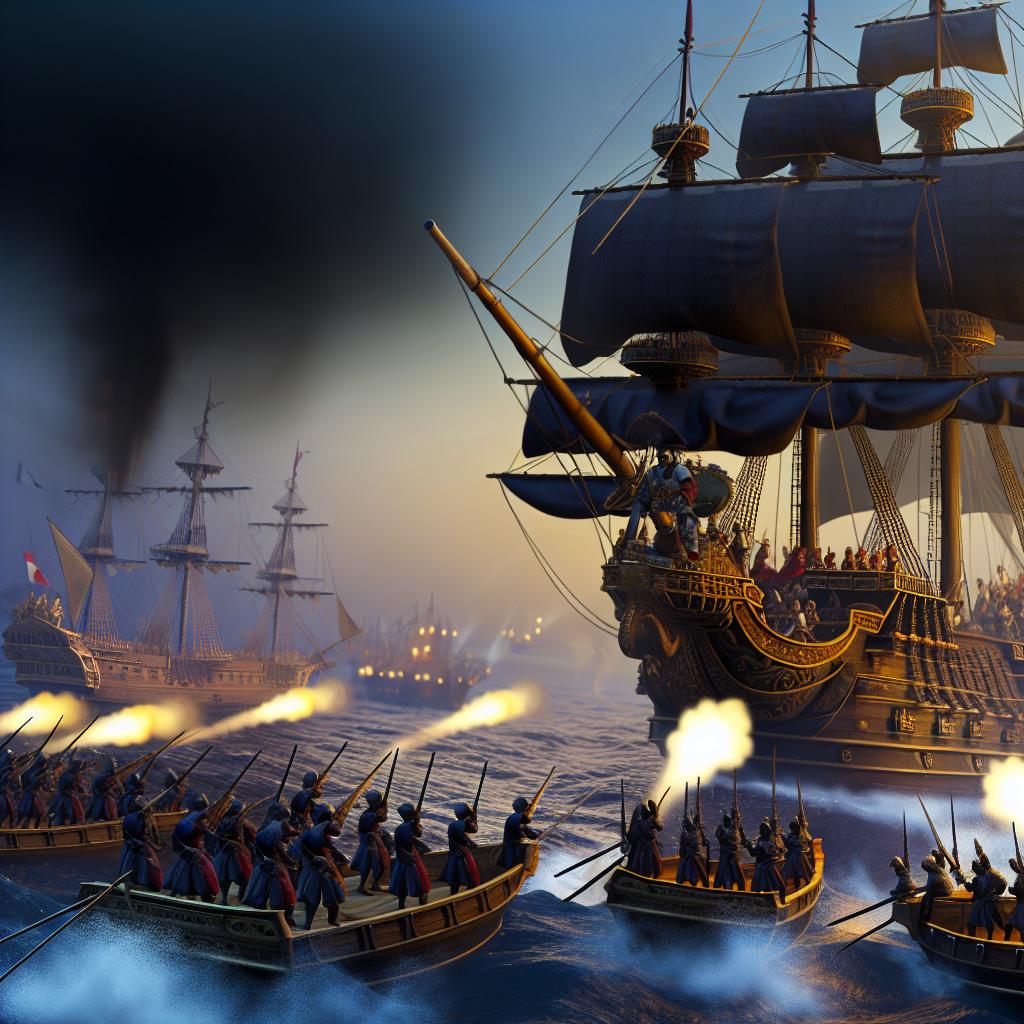Understanding Naval Units and Their Roles
In the strategic game “Empire Earth III,” naval warfare plays a critical role in controlling the seas and aiding land-based military efforts. Mastery over naval operations is not just about winning battles at sea; it involves securing vital routes, supporting terrestrial campaigns, and exerting maritime dominance. This involves understanding and effectively deploying different naval units, each having distinct roles that contribute to achieving overall superiority.
Key Naval Units
In “Empire Earth III,” various naval units serve distinct purposes to ensure a versatile and powerful navy.
Battleships are the heavy hitters of your fleet, equipped to engage large naval units as well as bombard coastal defenses. Their firepower is immense and can significantly influence the outcome of naval engagements, making them essential for maintaining dominance in contested waters.
Destroyers are the backbone of anti-submarine and anti-aircraft operations. They are versatile units essential for protecting more significant units like battleships and aircraft carriers from aerial and underwater threats. Their speed and maneuverability allow them to intercept threats and react swiftly to changing battle conditions.
Submarines, on the other hand, specialize in stealth and deception. These units can covertly attack enemy ships and disrupt supply lines by targeting merchant ships. Their ability to remain undetected in deep waters makes them a strategic asset for surprise attacks and disrupting enemy operations.
Carriers play a pivotal role by providing critical air support for your naval and land forces. They serve as a mobile airbase, extending the reach of your air units and enabling air superiority over the battlefield. Protecting these units is paramount, as their destruction can leave your forces vulnerable to aerial attacks.
Strategic Deployment
To forge a potent naval force, the strategic deployment and grouping of naval units are imperative. A balanced approach involves the use of combined arms tactics, integrating different types of naval units to complement each other’s strengths and mitigate weaknesses. For example, battleships can be employed for heavy bombardment, while destroyers shield carriers and respond to submarine threats, ensuring a comprehensive and adaptable fleet composition.
Protecting valuable units like carriers through solid escort formations can reduce vulnerabilities. An integrated approach where different units cover each other’s roles ensures that your naval force remains resilient in the face of opposition.
Positioning and Maneuvering
The art of positioning and maneuvering naval units can provide a substantial advantage in naval warfare. Maintaining mobility is crucial, as stationary units are vulnerable to enemy torpedoes and air strikes. Optimal positioning involves keeping your ships dynamically engaged, ensuring they are always at an advantage relative to the enemy’s position.
Utilizing natural features like terrain and water depth strategically can also enhance your positioning. Submarines, for instance, can exploit deep waters for stealth attacks, remaining undetected until they strike. Understanding these tactical positions can be the key to successfully engaging enemy forces.
Resource Control and Ship Production
A formidable navy requires a steady supply of resources, making control over aquatic reserves a priority. Establishing and safeguarding offshore oil rigs is crucial for providing the resources needed for ship construction and maintenance. Ensuring an uninterrupted flow of these materials enables the consistent production of a diversified range of ships, preparing your naval force to tackle varied threats efficiently.
Advanced shipyards are critical for producing a mix of naval units. A focus on balanced ship production that includes battleships, destroyers, submarines, and carriers can make your navy versatile and adaptable to various maritime threats.
Importance of Upgrades
Keeping your fleet technologically advanced is vital for sustaining its combat effectiveness. Regular upgrades improve key attributes such as speed, firepower, and armor, which should be aligned with your overall strategy and objectives. As the game progresses, investing in technological advancements ensures that your fleet can endure more intense engagements and remain a formidable adversary against hostile forces.
An upgraded navy not only enhances operational capabilities but also acts as a deterrent to potential aggressors, securing your territories and strategic interests.
Naval Tactics and Deception
An essential component of naval warfare is implementing tactics that confuse and deceive the enemy. Feints and decoys serve as effective tools in this regard. By engaging in simulated attacks with a small strike force, you can divert the enemy’s attention, leading them away from your true strategic goals. This form of deception can create windows of opportunity to exploit enemy vulnerabilities and gain tactical superiority.
Such tactics demand a keen understanding of your opponent’s strategies and habits, making it crucial to anticipate their movements and counter with disruption tactics. Successful deception can shift the momentum of engagements in your favor and facilitate the accomplishment of broader strategic objectives.
In conclusion, mastering naval warfare in “Empire Earth III” requires a comprehensive understanding and effective deployment of naval units, strategic planning, and continuous advancement in technology. Coupled with tactical acumen, these factors contribute to maintaining maritime dominance and achieving victory. For players seeking further insights, engaging with seasoned gamers through forums and communities can provide additional strategies and refined tactics to enhance naval warfare prowess.
This article was last updated on: June 22, 2025






Recent Comments